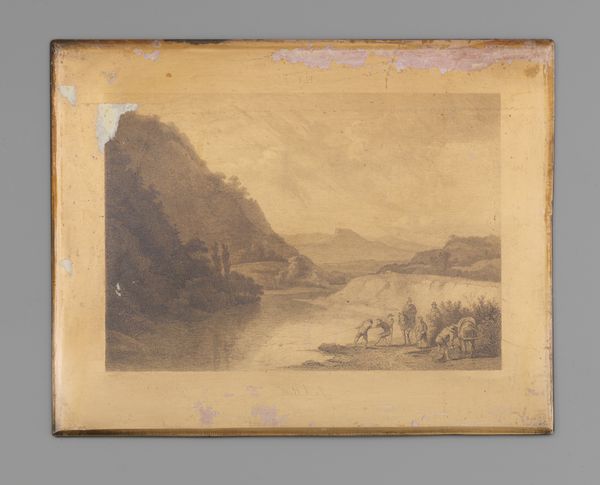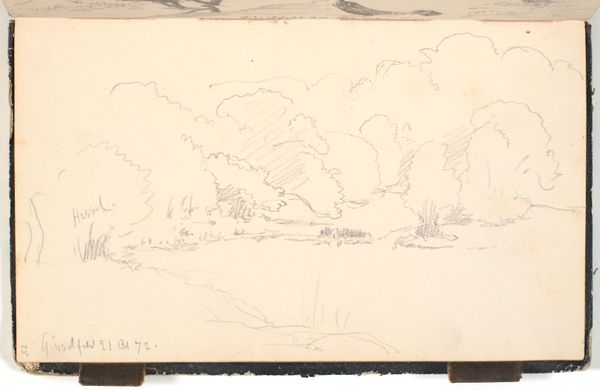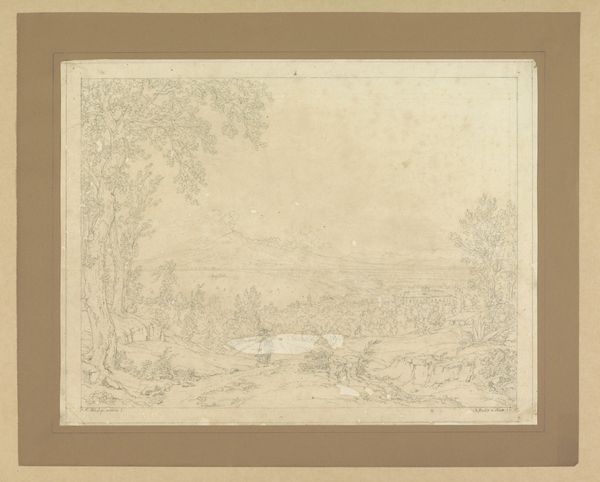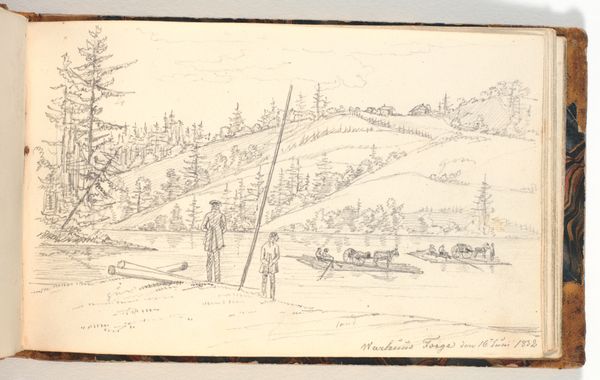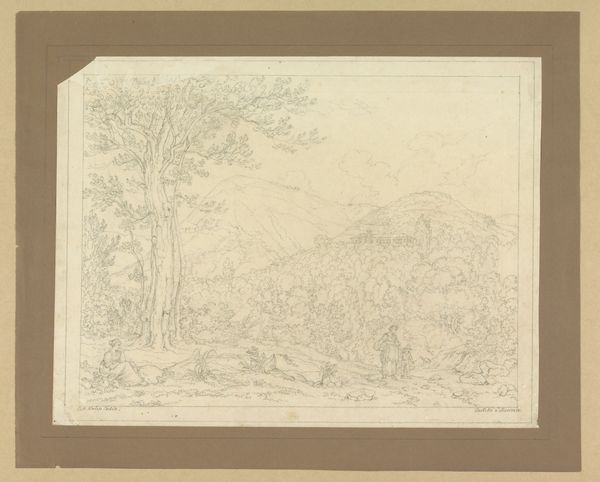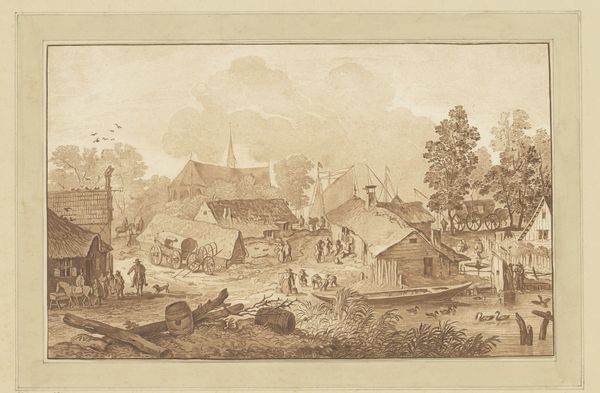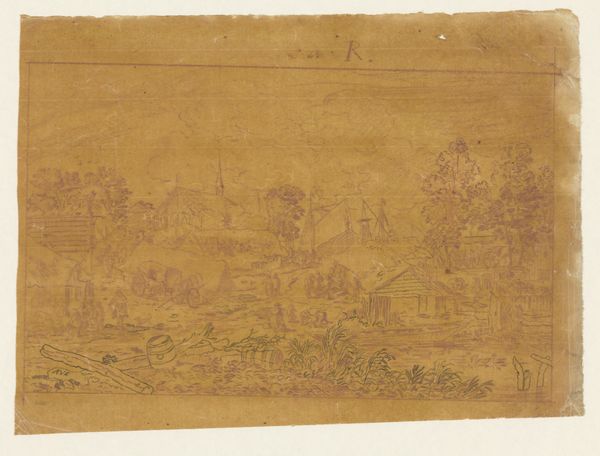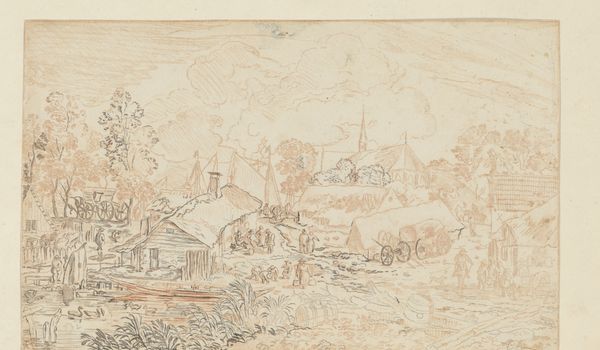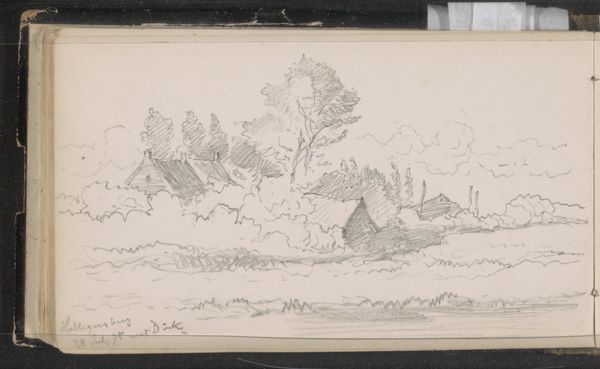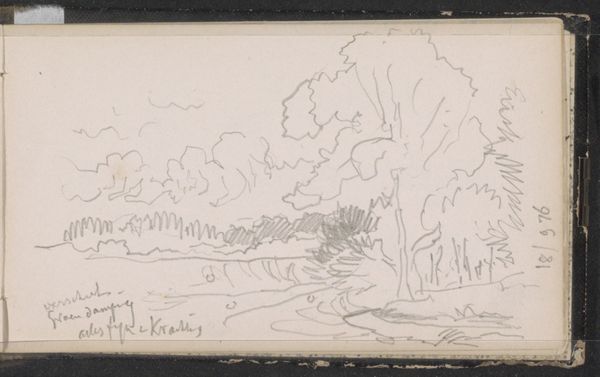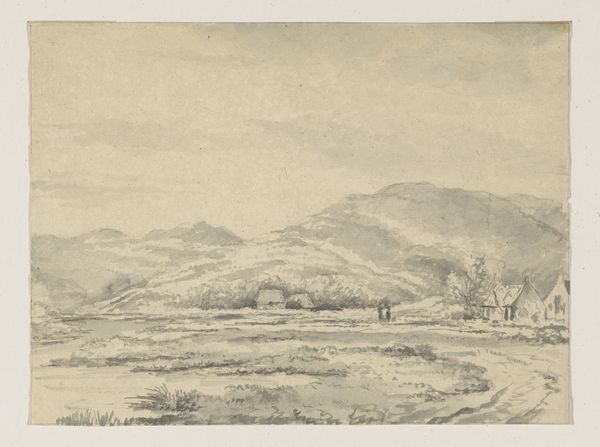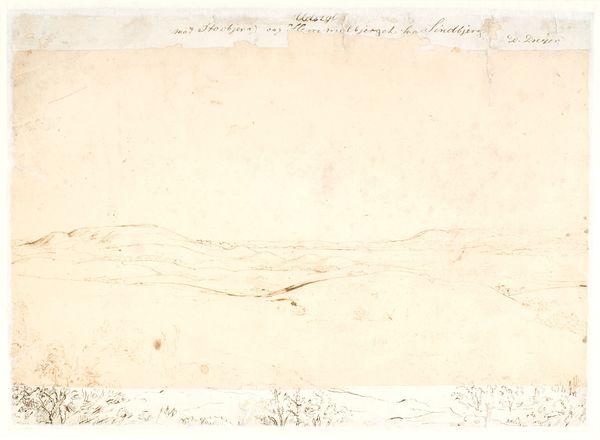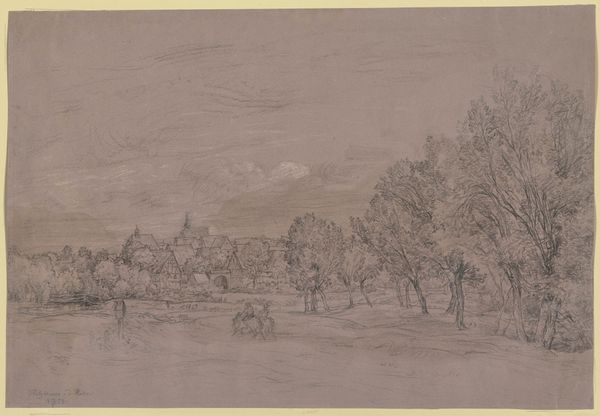
painting, plein-air, watercolor
#
water colours
#
narrative-art
#
painting
#
plein-air
#
landscape
#
watercolor
#
romanticism
#
watercolour illustration
#
genre-painting
#
history-painting
Dimensions: overall: 37.8 x 56.4 cm (14 7/8 x 22 3/16 in.)
Copyright: National Gallery of Art: CC0 1.0
Curator: The subdued tones create quite an interesting first impression, wouldn't you agree? This scene, painted with watercolors by George Catlin between 1847 and 1848, presents an expedition encamped on a Texas prairie. Editor: Yes, a first impression is the immediate construction of narrative through imagery. I think the positioning of the camp against the backdrop of the open land emphasizes the human intervention within a vast space. The presence of a campfire is so human. Curator: And speaking of human intervention, consider Catlin's methods—traveling extensively to document Indigenous peoples and scenes of American expansion. Think of the material considerations: watercolors allowed for relatively quick studies en plein air, perfectly suited for on-the-move documentation. How was this type of artwork intended to be circulated and viewed, and who controlled that flow of imagery? Editor: This artwork immediately makes me think of the Romantic vision of the West. And while beautiful and seemingly benign, it is steeped in complex political context, isn’t it? What’s missing in this landscape is perhaps what Catlin omits: the broader narratives of colonization, forced displacement, and cultural erasure inextricably linked to these encampments. We must ask, whose narrative is centered? Curator: Precisely! Consider the materiality further: What would this watercolor illustration be used for? Most likely translated into engravings for mass circulation in books. So then, the consumption of the image and narrative is the point here. This becomes about packaging the experience of expansion to fuel further expansion. Editor: Absolutely, it’s about shaping public opinion to validate certain actions. Catlin’s artwork contributes to the visual language that was leveraged to propagate Manifest Destiny—the belief in the inherent right to westward expansion and the often brutal subjugation of Indigenous communities. Curator: It is a romanticized history rooted in watercolor and paper and, of course, cultural insensitivity. By analyzing the materials and modes of production we can explore its role within broader networks of power and ideological influence, though. Editor: Right. Analyzing art such as this must include addressing questions of identity, power, and historical accountability. Doing so reminds us to stay attuned to the multiplicity of perspectives needed when interpreting art.
Comments
No comments
Be the first to comment and join the conversation on the ultimate creative platform.
